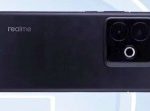Bitcoin; Ethereum; Alyssa Powell/Insider
- Fungibility refers to an asset’s ability to be exchanged for something else of equal value.
- Some examples of fungible assets include currencies, commodities, and precious stones.
- Non-fungible assets are unique, requiring much more complex valuation before a sale and include things like real estate, art, and sports cards.
- Visit Insider’s Investing Reference library for more stories.
Much has been made about the non-fungible token (NFT) movement. As an alternative to traditional art pieces, creators are making digital art and “signing” them using the Ethereum blockchain, ensuring each token is one-of-a-kind. These pieces of digital art are so popular, even the National Basketball Association and Major League Baseball have gotten into the game.
But what does “fungible” even mean?
What does fungible mean?
Fungible refers to items or commodities that can be exchanged with other assets or commodities of the same type. For example, currency is a fungible asset because it can be exchanged for other currencies, goods, or pay for services.
“Something that is fungible means that it’s identical to another item and can be swapped or exchanged for that item without either participant in the swap losing any value,” says Ian Kane, co-founder of blockchain based FinTech platform Unbanked. “If I give you a dollar and you give me a different dollar, we both still have $1 worth of spending power.”
On the flipside, something that is non-fungible cannot necessarily be easily exchanged for something of equal value. Art and collectibles are often considered non-fungible because of their unique properties. Because only one original exists, it has a distinctive property that cannot be easily appraised or exchanged for something like it.
Understanding fungibility
In order to be considered fungible, an asset must have an agreed-upon value and be interchangeable with other items of similar value. Bitcoin is considered a fungible item because it has a measurable value across currencies, and can be bought and sold for equal value. Moreover, fungible assets can be broken up and sold in fractions, making it easier to exchange for other like-items.
“If you print 100 copies of the same photo, they become fungible; if we traded it, we would get the same thing in return (like a dollar bill),” says Gutter Dan, the co-founder of the NFT series Gutter Cat Gang. “On the same token, those 100 photos are not unique and could be duplicated or destroyed. With NFTs, the reverse is true: They cannot be duplicated or destroyed [because of the underlying] blockchain technology, and [because] each is purely unique.”
Examples of fungible assets
We exchange fungible assets on a daily basis without thinking twice. When you buy groceries, get gas for your car, or go on a coffee run, you are exchanging cash for goods and services – or trading fungible items.
Some examples of fungible assets include:
- Currency: Around the world and in the digital space, currencies can be cross-exchanged for one another at an agreed-upon market rate. United States Dollars can be exchanged for Euros, Japanese Yen, or Bitcoin in whole and fractional numbers.
- Stocks and mutual funds: When investing in stocks and mutual funds, investors spend cash to get a financial instrument of the same value at the time of purchase. If a single share of a stock may cost $5.70, the buyer knows how much they need to spend in order to gain multiple shares, knowing it can be exchanged for cash in the future.
- Precious metals: Gold and silver are traded daily at a market rate, assuring owners how much value they hold when it’s time to buy. When it’s time to sell, someone holding a precious metal can easily exchange it for cash based on the market rate, making it fungible.
Examples of non-fungible assets
As mentioned before, while fungible items are interchangeable with each other, non-fungible assets are unique. Therefore, they must be judged across multiple criteria. Some of the factors buyers and sellers consider include provenance (or who owned the item previously), how unique it is compared to others, and how the market for non-fungible assets have changed over time. In addition, non-fungible assets can not be broken up and sold in pieces: Its value is determined by the whole of the item. Some non-fungible assets include:
- Real estate: Selling real estate requires a property to be evaluated across several different factors, such as how much comparative homes have sold for, the demand for properties in the area, and how unique the home is. Because the value is based on these evaluation points – like square footage, architecture, and interior features – real estate is considered non-fungible.
- Trading cards: Although trading cards come in equally-priced packs, the actual contents may hold different values based on their condition, rarity, and composition. Modifiers like grading and autographs can drive the value higher. Therefore, the unique condition of trading cards make them non-fungible.
- Non-fungible tokens: Non-fungible assets are not limited to digital tokens. Any one-of-a-kind item that cannot be directly traded for something of the same value can be considered non-fungible, ranging from family heirlooms, digital collectibles, or art collections. Non-fungible tokens hold value based on the rarity of the item and the community driving it, and no two NFTs are exactly alike.
Fungible vs. liquid
While some assets are fungible, they may not be liquid, which is different. Fungibility refers to whether an asset can be exchanged for a similar item of the same value, while liquidity refers to how easily an asset or security can be bought or sold on the secondary market.
“A liquid asset is something that is easily sold whereas a fungible asset is interchangeable but not necessarily easily sold,” says Shaun Heng, vice president of growth operations and chief of staff at cryptocurrency tracking website CoinMarketCap. “An example of a fungible but non-liquid asset would be stocks of the same class in a company that is not on a public exchange. One common stock or one preferred stock is fungible for a stock in its same class. However, it may be hard to find a buyer for stocks in a private company.”
While all liquid assets are fungible, not all fungible assets are liquid. If you cannot sell a fungible asset for value in short form, it isn’t liquefiable.
|
Fungible |
Liquidity |
|
|
The financial takeaway
Simply put, fungible assets are interchangeable because their value defines them. Think of currency, mutual funds, and even gasoline as fungible assets. By knowing how fungible assets work – and how they can play into your ultimate portfolio strategy – every investor can make smart decisions about how and where to invest in a combination of both.
Although there’s a lot of excitement about digital artwork and non-fungible tokens, experts recommend investors take their time to carefully evaluate whether jumping into the space is right for their strategy. Before getting into any asset, it’s important to research the rarity of items, understand the trends, and understand the potential risk and rewards.
“Whatever you are deciding to do, be sure you can take the risk,” says Les Borsai, co-founder and chief strategy officer of registered investment advisor firm Wave Financial. “Don’t spend what you can’t afford to lose. Make sure you are buying what you researched. Just because the returns are aggressive and quick, it’s key to understand what you are investing in before you do it.”
Powered by WPeMatico






